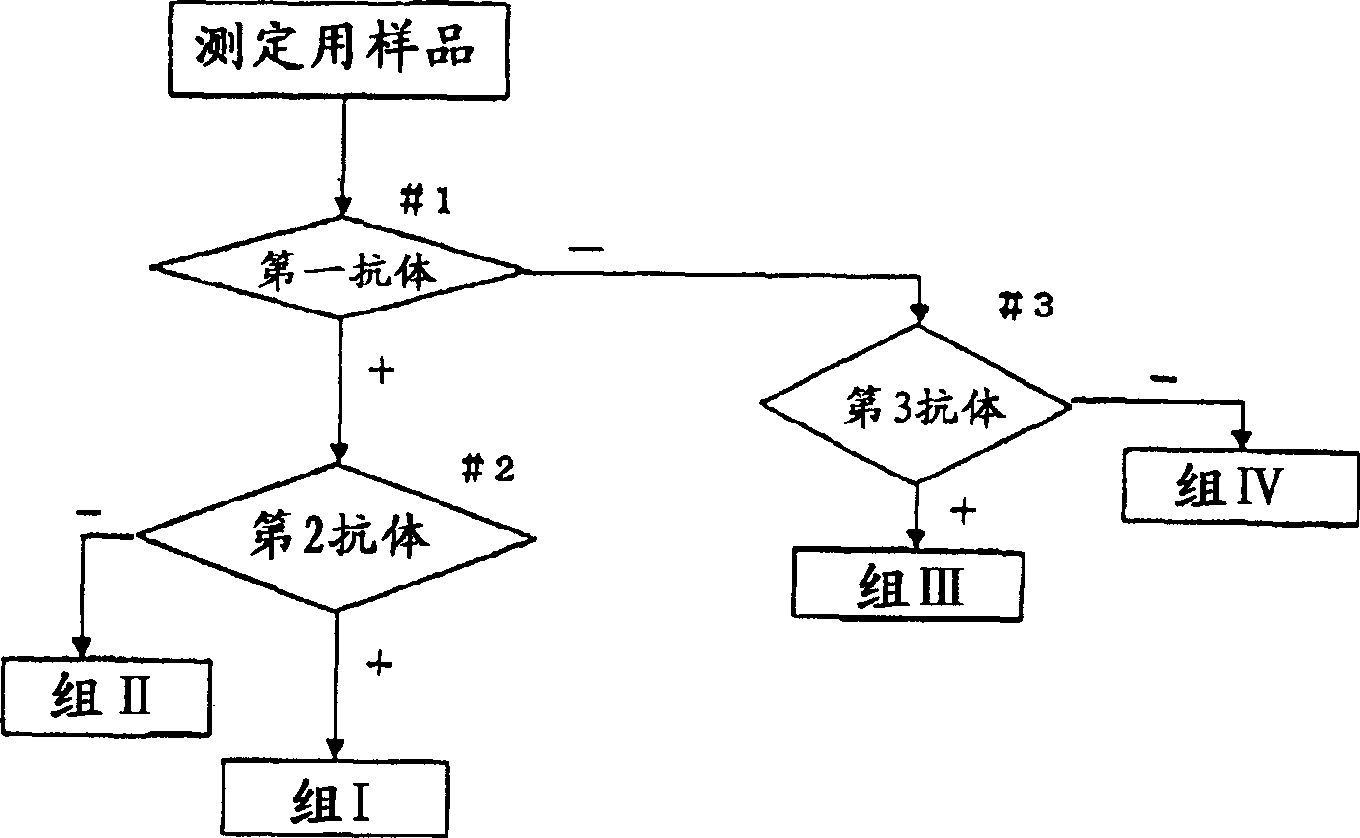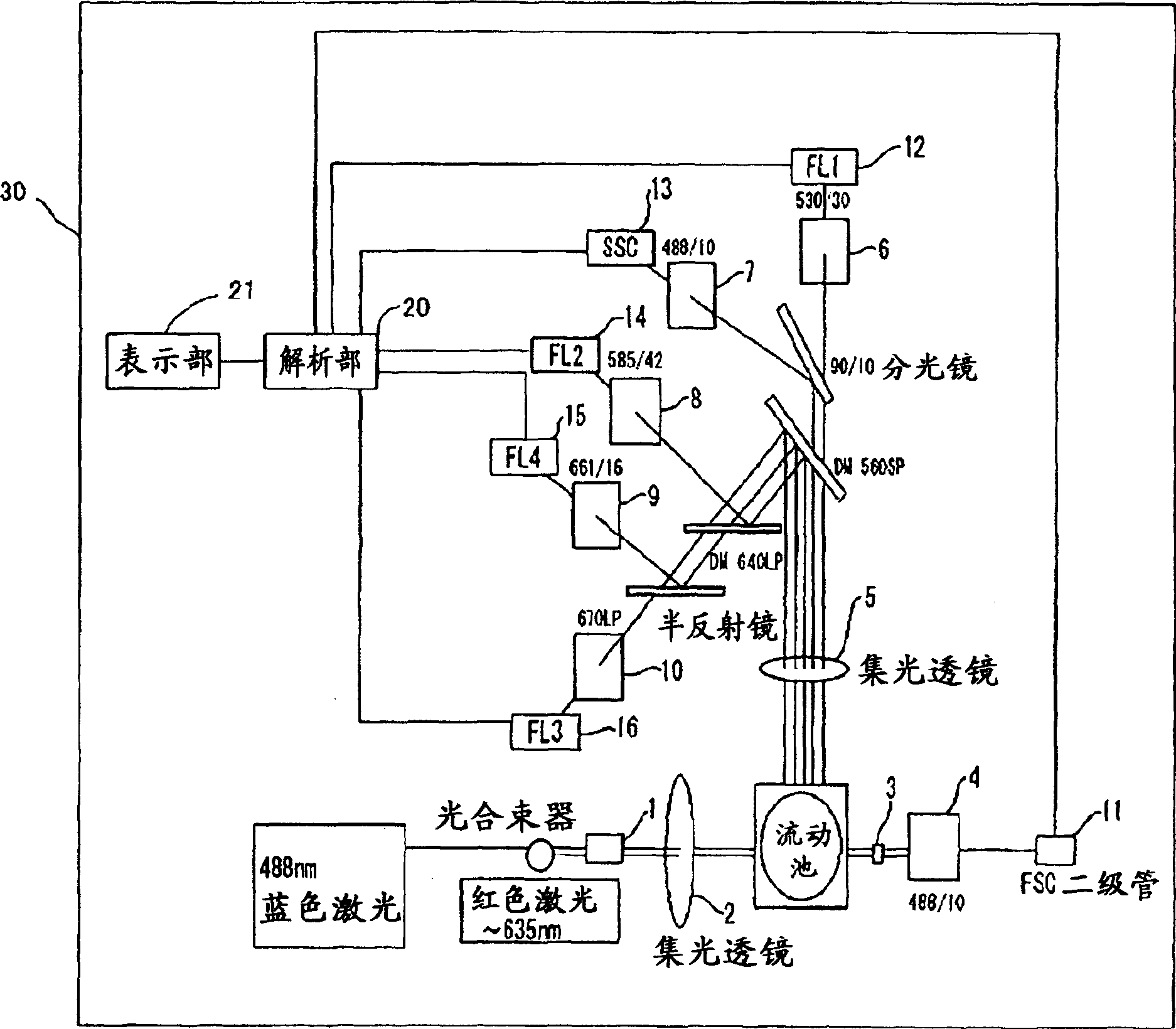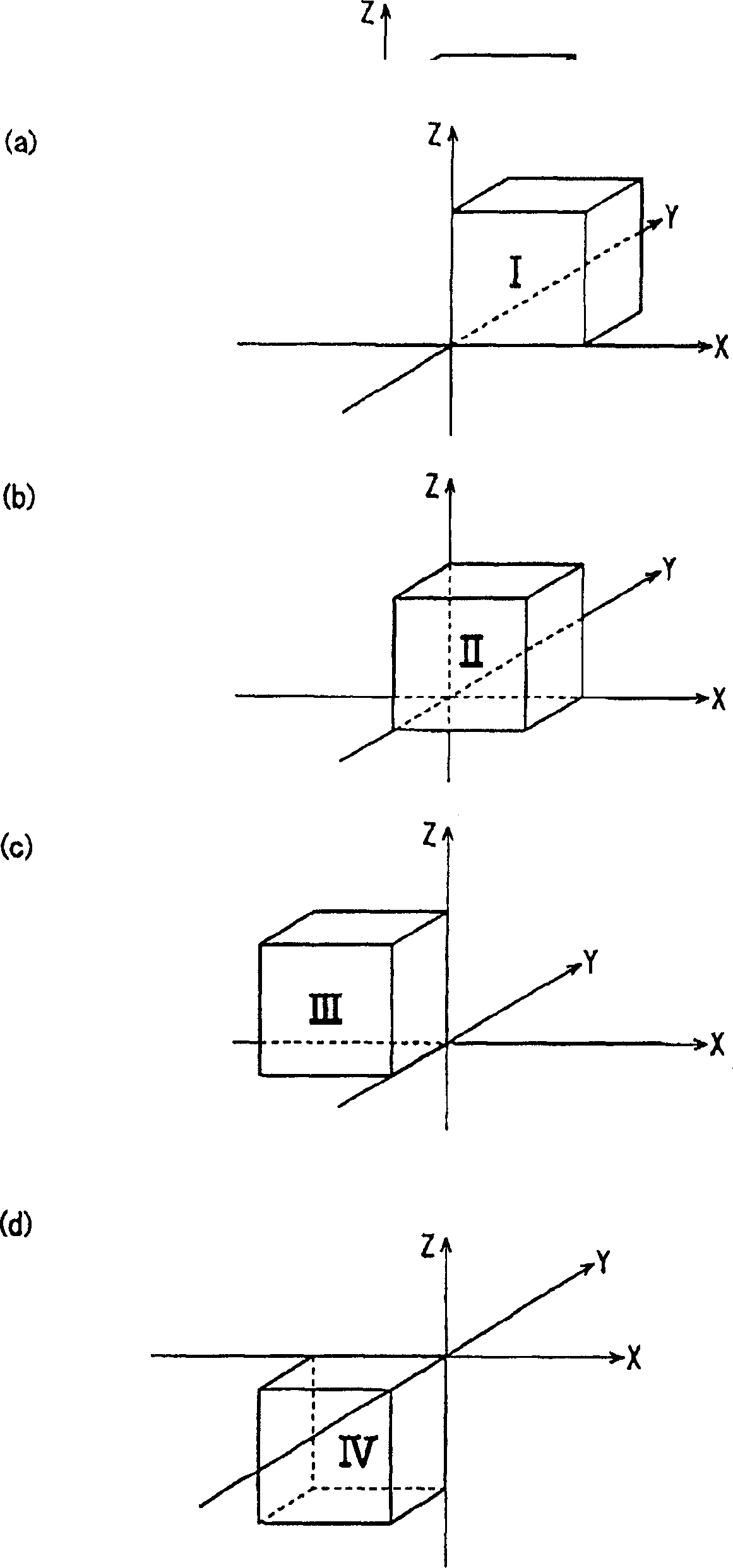Method for screening cervical cancer
A technology of cervical cancer and screening method, which is applied in the field of cervical cancer diagnostic reagents, can solve problems such as the performance cannot meet the needs, the type of cervical cancer cannot be judged, and the information of the type of cancer cannot be obtained, so as to achieve high precision and high efficiency effect
- Summary
- Abstract
- Description
- Claims
- Application Information
AI Technical Summary
Problems solved by technology
Method used
Image
Examples
preparation example Construction
[0090] [Preparation of samples for measurement]
[0091] The assay samples provided for the screening method of the present invention were prepared as follows.
[0092] First, the cervical cancer diagnostic reagent of the present invention containing the first labeled antibody, the second labeled antibody, and the third labeled antibody is added to cervical cells to be screened, and reacted for a predetermined time to prepare a measurement sample.
[0093] Cervix cells may be aggregates of cells dispersed into single cells, or cells on a smear specimen. In order to be applicable to a flow cytometer with a high processing speed, it is preferable to use aggregates of cells dispersed into single cells.
[0094] The cervix cell group that is used for measuring the sample preparation can directly use the cervix cell mass that is taken when wiping the surface of the cervix with a cotton swab or a scraper, or it can be mixed with the cervix of the present invention after removing mu...
Embodiment 1
[0172] Prepare 4 test tubes, add approximately 1×10 6 Individual HeLa cells, C33A cells, clinical samples 1, 2. After the cells were fixed with PreservCyt solution from Cytyc Company, they were centrifuged at 10,000 rpm for 1 minute, and the supernatant was discarded. Then 5% N-acetyl-L-cysteine was added, stirred, centrifuged at 10000 rpm for 1 minute, and the supernatant was discarded. After the cells were washed with PBS, they were centrifuged at 10,000 rpm for 1 minute, and the supernatant was discarded. 1 ml of PBS or PBS-T (PBS containing 0.05% Tween20) containing 1% goat serum was added, stirred, and then blocked for 10 minutes.
[0173] After blocking, centrifuge at 10,000 rpm for 1 minute, and discard the supernatant. The reagent containing the first labeled antibody prepared above was added, and the reaction was stirred at room temperature for 30 minutes.
[0174] After the antibody reaction, centrifuge at 10,000rpm for 1 minute, discard the supernatant, wash t...
Embodiment 2
[0185] Add about 1×10 oral mucosal epithelial cells to the test tube 6 Each, in order to prevent non-specific staining caused by RNA, 100 μl of 300 μg / ml RNase A (Sigma #R-4612) diluted in PBS was added. After stirring at room temperature for 5 minutes, centrifuge at 10,000 rpm for 1 minute, and discard the supernatant. Then, 500 µl of 10 µM PI (Propidium iodide) was added as a solution for nuclear staining, and stirred at room temperature for 30 minutes. Centrifuge at 10,000 rpm for 1 minute, discard the supernatant, add 500 μl of 0.05% PBST, and centrifuge at 10,000 rpm for 1 minute. After replacing the solution with an appropriate amount of PBS, add to the Figure 6 Flow cytometers constructed as indicated.
[0186] Excited with an argon ion laser at 488 nm, while recording the distribution of orange fluorescence from nuclear staining and the distribution of side scattered light, an image of cells passing through the flow cell was created. Figure 22 The nuclear staining ...
PUM
 Login to View More
Login to View More Abstract
Description
Claims
Application Information
 Login to View More
Login to View More - Generate Ideas
- Intellectual Property
- Life Sciences
- Materials
- Tech Scout
- Unparalleled Data Quality
- Higher Quality Content
- 60% Fewer Hallucinations
Browse by: Latest US Patents, China's latest patents, Technical Efficacy Thesaurus, Application Domain, Technology Topic, Popular Technical Reports.
© 2025 PatSnap. All rights reserved.Legal|Privacy policy|Modern Slavery Act Transparency Statement|Sitemap|About US| Contact US: help@patsnap.com



